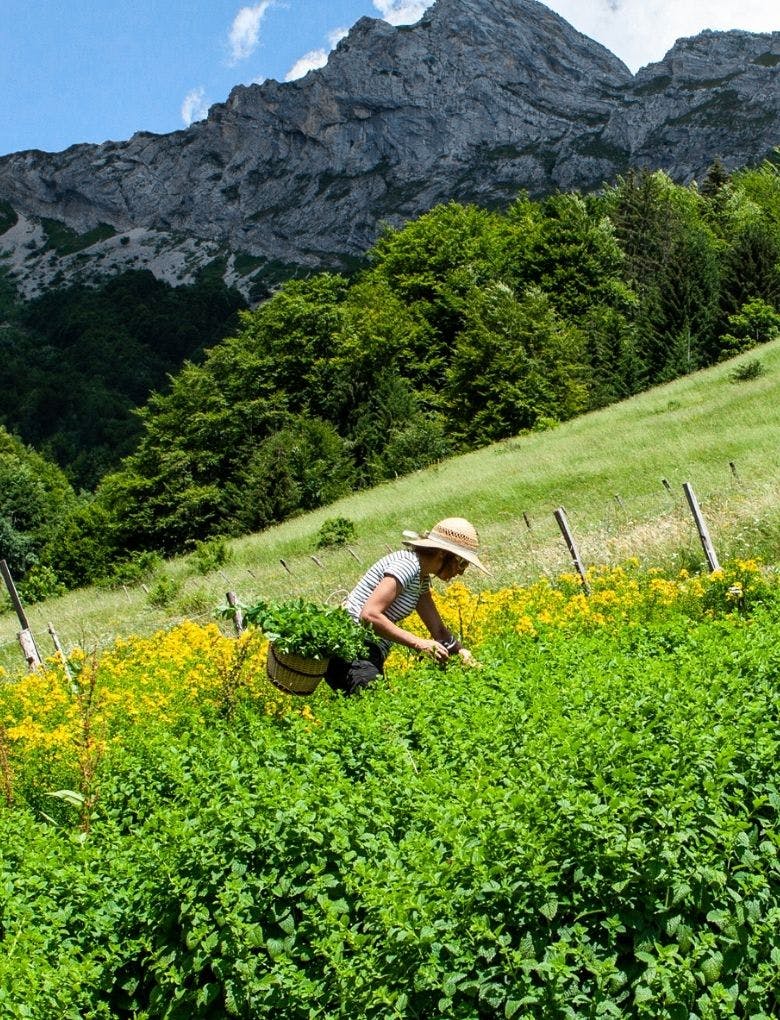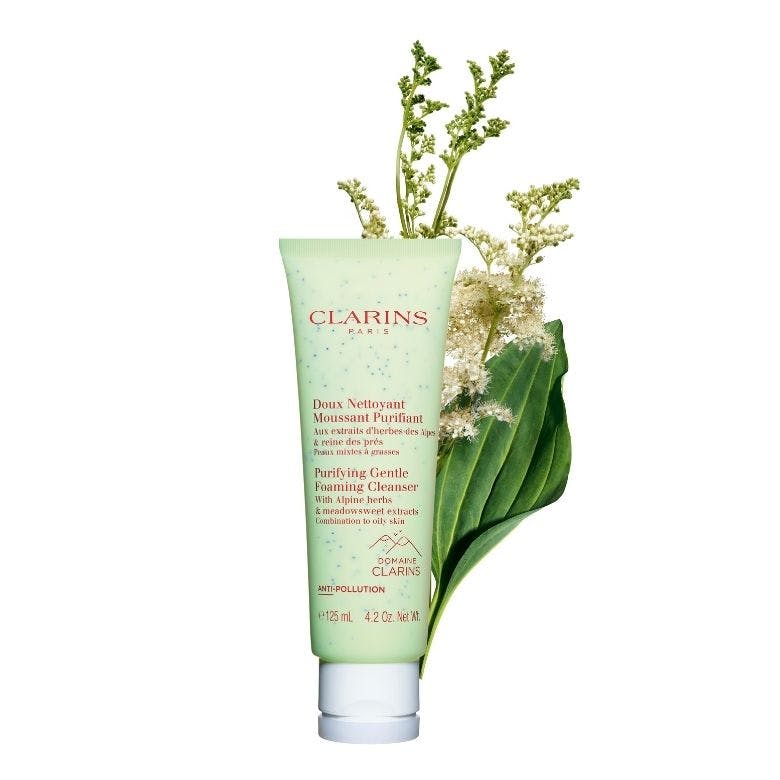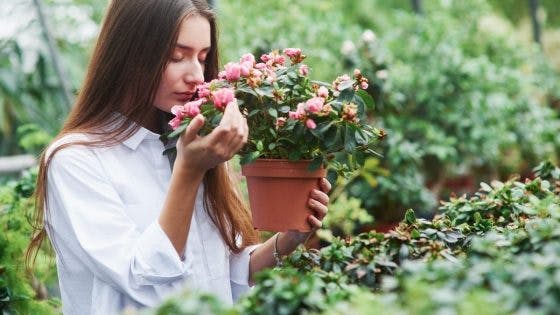Farm-To-Face – Why High-Altitude Ingredients Make A Difference
6 minutes read
The hills are alive, and not just with the sound of music. Did you know there are a whole host of beauty benefits to be found in heading up the mountains: fresh air, rich soil, and a significant drop in pollution. The result? An optimal environment for growing top-quality skincare ingredients. And more than ever before, consumers are taking an interest in exactly what goes into their beloved beauty products.
You may have heard the term ‘clean beauty’ bouncing around recently. Broadly speaking, it means safe products for both people and the planet. Unsurprisingly, there has been a massive surge in interest, with the global clean beauty market estimated to reach £18 billion by 2024. Yet the term itself isn’t legally regulated, with many brands taking it upon themselves to draw up their parameters, making bold claims to lure in customers. So, let’s separate the wheat from the chaff and get to grips with what high-altitude ingredients and clean beauty can do for both you and Mother Nature.

Clean and green: plant power, beauty and the planet
Plants have been used in skincare and cosmetics for centuries, and scientists are still uncovering new and exciting innovations to help a plethora of concerns. Suffering from redness? There’s a plant that can help… Trying to tackle the effects of air pollution on your complexion? A botanical solution exists. So somewhat unsurprisingly, the conditions in which these plants are grown make a difference. The Alps, for example, offer a unique climate sitting at an altitude of 4,500 ft. It’s a pure yet harsh environment, with the surrounding mountains protecting plants from the wind while warming them. As such, the properties of the plant life up here are unlike anywhere else in the world.
Lavender: when grown at high altitudes in the Provence region of France, it has more significant levels of linalyl acetate, a naturally occurring phytochemical and the principal component of lavender essential oil. The calming and soothing effects of oil made from this particular variety of plants are enhanced. Alpine rose is another instance; it is hardy enough to survive the snowy Swiss winters; scientists discovered this stems from a protective layer atop its leaves. Harnessing this power in skincare can help bolster skin barrier function.
Other wonder ingredients that can be found on the mountain’s slopes are the famous flower: Edelweiss. Due to surviving the harsh weather conditions, they have an incredible ability to fight free radicals, plus they have been proven to be an effective anti-inflammatory. Lastly, Swiss green apple stems have a higher acid content meaning they stay fresher for longer. Upon this discovery, scientists swiftly got to work recreating this effect in skincare.
No wonder ingredients harvested in uncultivated, fertile soil free of pesticides have gained momentum, especially given growing consumer concern around synthetic chemicals. Customers have begun avoiding pesky parabens and phthalates in favour of ingredients deemed safer for both our skin and the planet. However, issues have arisen around the lack of regulation for the term ‘clean beauty.’
Any product can be dubbed clean, whether or not it has been proven to be unsafe and as such, a sadly prolific practice called greenwashing has snuck into the mainstream.
The term greenwashing was first coined in 1986 by environmentalist Jay Westerveld, who criticised the ‘save the towel’ movement that saw hotels pushing their patrons to reuse their towels to help save water. He found that beyond each establishment’s energy bills being reduced, there was little to no positive impact for the environment.
Essentially, the term describes companies who make bold claims about being environmentally conscious in the hopes of cashing in on consumers, but without taking on any meaningful sustainability initiatives.
Many companies may even have good intentions and have become swept up in the buzz for clean beauty. It’s easy to see its allure, with research showing that 64% of Gen X consumers would spend more on a product if it came from a brand they believed to be sustainable, jumping up to 75% of Millennials.
So, how can you avoid it? Start by looking a little deeper into a company’s claims, especially if they seem too good to be true. Words like ‘eco’ can be plastered onto products even though they mean very little, so look to a company’s website for evidence.
Red flags should appear if you only find very vague or general information. If you can dig a little deeper, look up the factories used; are they sustainably sound? Look out for certification labels, and perhaps download an app that can analyse the ingredients in your potential purchase. Our favourites include Think Dirty, Good Face and Yuka.
Remember that clean beauty products can contain natural and synthetic ingredients, but only those that have either been proven safe or show no signs that they aren’t safe. Many terms like green, organic, and sustainable are often used interchangeably but have slightly different meanings.
Likewise, clean beauty doesn’t necessarily guarantee that the ingredients used are vegan, cruelty-free, natural, or nontoxic, so pick your priorities and do your research.
Read Next: Veganuary Skincare

Making a difference: La Domaine Clarins
Making the best of the fresh Alpine air, rich soil and unpolluted environment, an exciting beauty venture lies. La Domaine Clarins is a 200,000-acre open-air laboratory harvesting active ingredients straight from the source. 4,500 feet up, in the heart of the Alps, its philosophy mirrors that of the trusted French brand: top quality raw ingredients, sustainably sourced with nothing but respect for Mother Nature.
“As a scientist, I am very vigilant about the quality of natural ingredients and the way these ingredients are extracted,” said Dr Olivier Courtin-Clarins, Managing Director of Groupe Clarins. “Le Domaine Clarins gives us a chance to obtain the best ingredients while preserving the environment.”
It’s no coincidence that the first line of facial cleansers launched by the brand back in 1967 contained herbs from the Alps.

The fertile soil here is cultivated without pesticides, which means the plant extracts gathered can be organically certified. No mechanical material is used, which ensures the ground is not disturbed. And for skincare lovers, the reward is there for the taking.
Clarins formulas that benefit from the plants grown in this incredible region include organic Alpenrose popping up in My Clarins RE-FRESH Hydrating Beauty Mist. Along with organic Houseleek extracts found in ClarinsMen Super Moisture Gel and the fantastic Alpine cleansing range, which utilises handpicked Gentiana lutea and Lemon balm leaves.
After being carefully dried for several weeks to keep the active molecules intact, the soothing properties of each ingredient are distilled into Clarins Cleansing Milks.
All the exciting findings at La Domaine are then added to the Clarins Herbarium, which currently contains 208 plants.
“Above all, it’s the quality of the raw materials that make quality products,” says Christian Courtin-Clarins, President of the Supervisory Board, Groupe Clarins, and by 2025 the company aims to use 100% sustainably sourced materials. With so many innovations in skincare to be found within this incredible landscape, no wonder Maria had such a spring in her step.
Sign up for our newsletter
We will keep you in the loop for special offers, exclusive gifts and product news.

